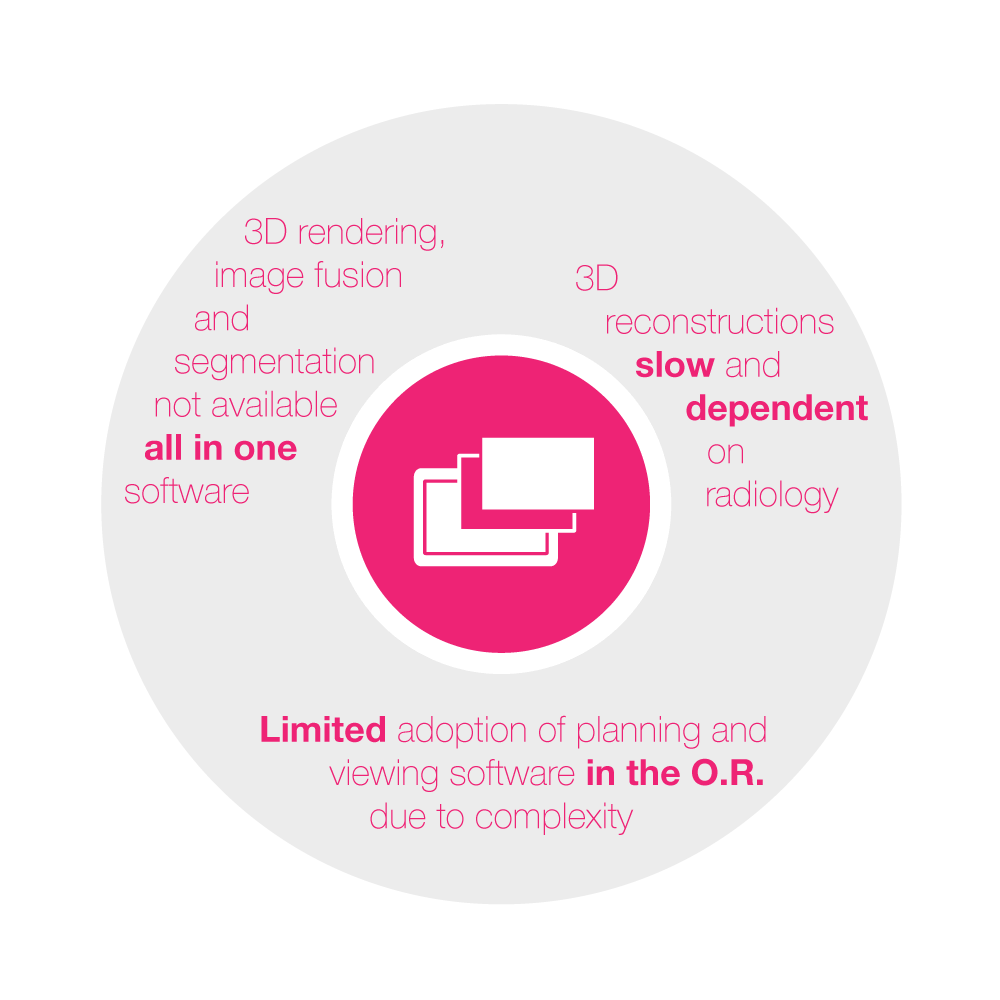Surgical Planning
Enhancing surgical data
Brainlab Digital O.R. goes far beyond simply consolidating O.R. information into one source and being a central interface for PACS, HIS and VNAs. With Digital O.R.
integration, Brainlab brings its core expertise to the operating room: software tools for enhancing patient images and enabling surgeons to create surgical plans in seconds.
Discover how to document your procedure with images and videos at the touch of a finger.
